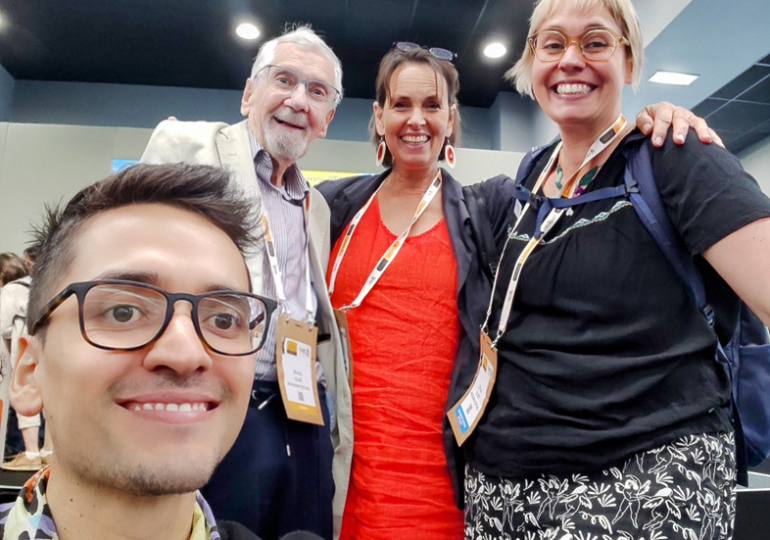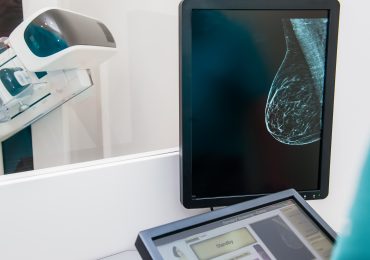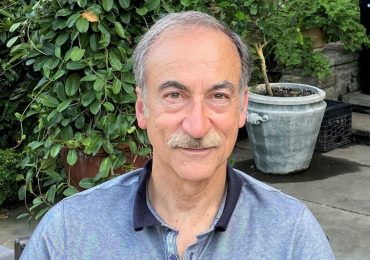It’s been just over a month since the 12th International Conference on Mycorrhiza. In these blog posts, we hear from some of the winners of Functional Ecology’s poster and talk prizes! Here, Leonardo Castanedo – who won our second place prize for his talk ‘Thriving together: unravelling nutrient dynamics regulating ericoid mycorrhizal symbiosis‘ – shares insights into his research, his experience at the conference, and how to deliver an award-winning talk.
About the research behind the talk
My research focuses on ericoid mycorrhizae (ErM), an overlooked yet ecologically important symbiosis1,2. ErM forms between most Ericaceae plants and certain Jungermanniales bryophytes, such as Calypogeia fissa, with Helotialean fungi like Rhizoscyphus ericae. Unlike obligate symbionts, such as those involved in Arbuscular Mycorrhizae (AM), Helotialean fungi can live independently as saprotrophs, not relying solely on their plant hosts for surviving. Interestingly, ErM, like other types of endosymbiosis, is thought to have evolved from AM, often considered the ‘mother of plant root endosymbioses.’3 Thus, by establishing and studying the C. fissa/R. ericae symbiotic system (Figure 1A), we aim to identify conserved and divergent molecular components, such as genes and regulatory elements, that have facilitated the accommodation of ErM-forming fungi in specific plant lineages, which we predict underlie the evolution of ErM from its ancestral AM state.
One key aspect of plant endosymbiosis is the provision of nutrients, which is essential for plant health and growth. ErM play a crucial role in nutrient-poor ecosystems such as boreal forests, bogs, and heathlands. In these habitats, ErM are estimated to contribute to the storage of approximately 20% of Earth’s terrestrial carbon and help mobilize essential macronutrients like Phosphate (Pi) and Nitrogen (N)4. Current knowledge suggests that Pi and N govern the establishment of root endosymbioses, such as AM. However, it is not yet known whether these macronutrients regulate ErM. Therefore, the second goal of our research is to conduct controlled experiments using the C. fissa/R. ericae symbiotic system to determine whether the supply of Pi and N influences the establishment of ErM (Fig. 1B).
Figure 1. (A) Workflow depicting the inoculation assays of C. fissa (1) with R. ericae (2) for the re-synthesis of Ericoid Mycorrhizae in vitro (3). (B) Nutrient supply experiments with Phosphate and Nitrogen were conducted to determine whether these macronutrients regulate the establishment of this plant endosymbiosis.
The key findings of our research are two-fold: 1) Compared to nutrient replete conditions, a low supply of Pi is sufficient for the establishment of ErM in C. fissa (Fig. 2A), similar to AM symbiosis5,6. However, under low Pi supply, the ErM is further strengthened by decreasing the supply of N, which differs from AM6. In fact, the ErM in C. fissa is maximized under simultaneous Pi and N starvation (Fig. 2B). In contrast, when grown separately under Pi/N starvation, both C. fissa and its symbiotic fungus R. ericae grow poorly (compare Fig. 1A2 with Fig. 2). These results suggest that ErM can provide resilience to its symbiont and host under conditions where Pi and N, two of the most limiting macronutrients in soil, are scarce. 2) Furthermore, genome-wide gene expression analysis using our ErM system under relevant nutrient conditions identified endosymbiosis-marker genes that are also expressed during the establishment of AM. In addition, we found genes that appear to be ErM-specific, which may help explain how different Helotialean symbionts were accommodated in ErM-forming plant species. We are currently testing these hypotheses using both bioinformatic and wet-lab approaches.
Figure 2. (A and B) C. fissa plants inoculated with R. ericae (left panels) and non-inoculated plants (right panels) growing in low Phosphate (A) and low Phosphate/low Nitrogen environments (B). Note the enhanced size of C. fissa in the inoculated conditions (lower panels) compared to the non-inoculated conditions (upper panels).
The genomic and transcriptomic data from this study will be key for cross-species and cross-symbiosis analyses, offering new insights into the evolution of plant endosymbioses. This research will help identify the minimal gene set or evolutionary toolkit that enabled their development and reveal the nutritional-regulatory rules under which ErM and other types of plant endosymbioses evolved.
In my opinion, as a plant evolutionary physiologist, fieldwork must be paired with controlled experiments to draw strong conclusions and advance the mycorrhizae field. For instance, understanding the nutritional-regulatory rules that appear to be a strong selective force in the evolution of plant endosymbiosis requires field characterization with temporal resolution. This can be achieved through techniques that allow high-resolution profiling of plant and soil nutrients for example. Furthermore, the resulting data, and other types of data, should be open access, easily interpretable, and curated in a database that allows anyone in the mycorrhizae field to utilize it. Following field work, hypothesis-driven laboratory testing, similar to what we presented at ICOM12, could be conducted.
Finally, from my perspective as a plant molecular biologist, the ability to conduct reverse-genetic approaches in both plants and fungal symbionts could help identify the molecular toolkit that underlie the evolution of plant endosymbiosis. Moreover, these approaches have the potential to drive genetic engineering efforts, enabling the development of biotechnological tools that can ensure food security and support biodiversity resilience in the face of climate change. There are several inspiring initiatives aimed at achieving symbiosis engineering in plants, such as the Enabling Nutrient Symbioses in Agriculture (ENSA) project, led by Giles Oldroyd, who also delivered a remarkable talk at ICOM12. Therefore, I believe plant symbiosis engineering is a realistic strategy in the future.
About the conference
In our group with Pierre-Marc Delaux, we adhere to a strict policy of using trains whenever possible due to climate change-related concerns. I traveled about 1,600 km from Toulouse, a city in southern France, to Manchester. It was a long but pleasant journey. Great landscapes along the way. You could say that spending more than 12 hours on trains in a single day is an adventure in itself.
This was the first time I attended this meeting, and it was lovely. In fact, I am relatively new to the mycorrhizae field. Previously, I worked with Arabidopsis and related species in the field of metal homeostasis and hyperaccumulation, but I have always been fascinated by cross-kingdom interactions since I decided to study biology. So you could say that I brought my expertise in nutrient homeostasis to the mycorrhizae field in Toulouse. Returning to ICOM12, I found the meeting awe-inspiring, with a very friendly community. I had the chance to discuss science and life with researchers whose work I had only read about in scientific papers, and every single one of them was humble, approachable, and eager to share their knowledge. It was a truly enriching experience that deepened my appreciation for this field and the community.
One of my favorite parts of ICOM12 was the one-on-one interactions with people, including speakers and scientists whose topics might seem far from my current research. However, a particular highlight for me was the chance to chat with a titan and pioneer of the mycorrhizae field, Sir David Read (Fig. 3). After my talk, he approached me, and we eagerly discussed one of our research findings, which empirically confirmed the hypothesis he, Jeffrey G. Duckett, and their colleagues proposed—that nitrogen limitation has served as a selective pressure for the evolution of ErM2,4. I regret not having my copy of Mycorrhizal Symbiosis, the book co-written by Sir David Read and the great Sally E. Smith, so that Sir David could sign it.
Figure 3. From left to right: me (Leonardo Castanedo), Sir David Read, and two scientists whom I admire, Uta Paszkowski and Katie Field.
I would advise anyone to approach the people they wish to talk to. Be yourself, don’t overthink it—just go and start a conversation. You might be surprised by how open scientists, especially the ‘giants’ in the field, are to engaging with young and motivated researchers. And always be nice and kind to everybody.
I have the following advice for anyone giving their first talk at a conference
Delineate the key message(s) you wish to convey during your talk.
Create easy-to-understand slides with clear figures and legible fonts.
Minimize the number of items on each slide; you want to keep the audience focused and able to follow along. Overloaded slides can overwhelm your audience.
Keep the number of slides to a minimum. For a 10-minute talk, do not prepare more than 10 slides.
Practice a few times with your group and be open to feedback and criticism.
Have fun. Enjoy yourself!
About the author
How did I get involved in my study area? Long story short, I migrated from Mexico to Germany in 2017 to pursue my PhD. After finishing, I came across my current boss, Pierre-Marc Delaux, whose work I knew from several papers his lab had published. I knew I wanted to work with him, so I reached out, and here we are. When I first joined his lab, I had never heard of ericoid mycorrhizae, but as I began to learn about it, I found the topic fascinating—it was an instant match.
One of the best aspects of this field is that, due to its complexity, there is always an opportunity for discovery. Furthermore, I believe that by developing a holistic understanding of mycorrhizal symbiosis, we could harness it to address many issues arising from anthropogenic activities, such as excessive fertilizer use and soil contamination.
I love spending time with my family whenever I can. My partner (Lisa), my 4-year-old son (Adrian), our dog (Wolfy), and I enjoy doing long walks, just wondering around (Fig. 4). We, my son and I enjoy doing puzzles together. Since I’m Mexican, I love reading Latin American literature, particularly novels, and I also enjoy exploring topics in psychology and politics. Lastly, I’m a music lover, so if you ask my colleagues at work, they’ll tell you I’m always wearing headphones—either listening to a podcast or music that helps me focus.
Figure 4. (A-C) Coastal dunes and heathlands located in northern Denmark (Tversted, North Jutland) near the North Sea. (D and E) Temperate forests in North Rhine-Westphalia (Nordrhein-Westfalen), Germany: Bochum (top) and Gevelsberg (bottom).
Literature cited
Brundrett, M. C. & Tedersoo, L. Evolutionary history of mycorrhizal symbioses and global host plant diversity. New Phytologist 220, 1108–1115 (2018).
Read, D. J., Duckett, J. G., Francis, R., Ligrone, R. & Russell, A. Symbiotic fungal associations in ‘lower’ land plants. Phil. Trans. R. Soc. Lond. B 355, 815–831 (2000).
Parniske, M. Arbuscular mycorrhiza: the mother of plant root endosymbioses. Nat Rev Microbiol 6, 763–775 (2008).
Read, D. J., Leake, J. R. & Perez-Moreno, J. Mycorrhizal fungi as drivers of ecosystem processes in heathland and boreal forest biomes. Can. J. Bot. 82, 1243–1263 (2004).
Bucher, M. Functional biology of plant phosphate uptake at root and mycorrhiza interfaces. New Phytologist 173, 11–26 (2007).
Shi, J., Wang, X. & Wang, E. Mycorrhizal Symbiosis in Plant Growth and Stress Adaptation: From Genes to Ecosystems. Annu. Rev. Plant Biol. 74, 569–607 (2023).
Leave a comment



